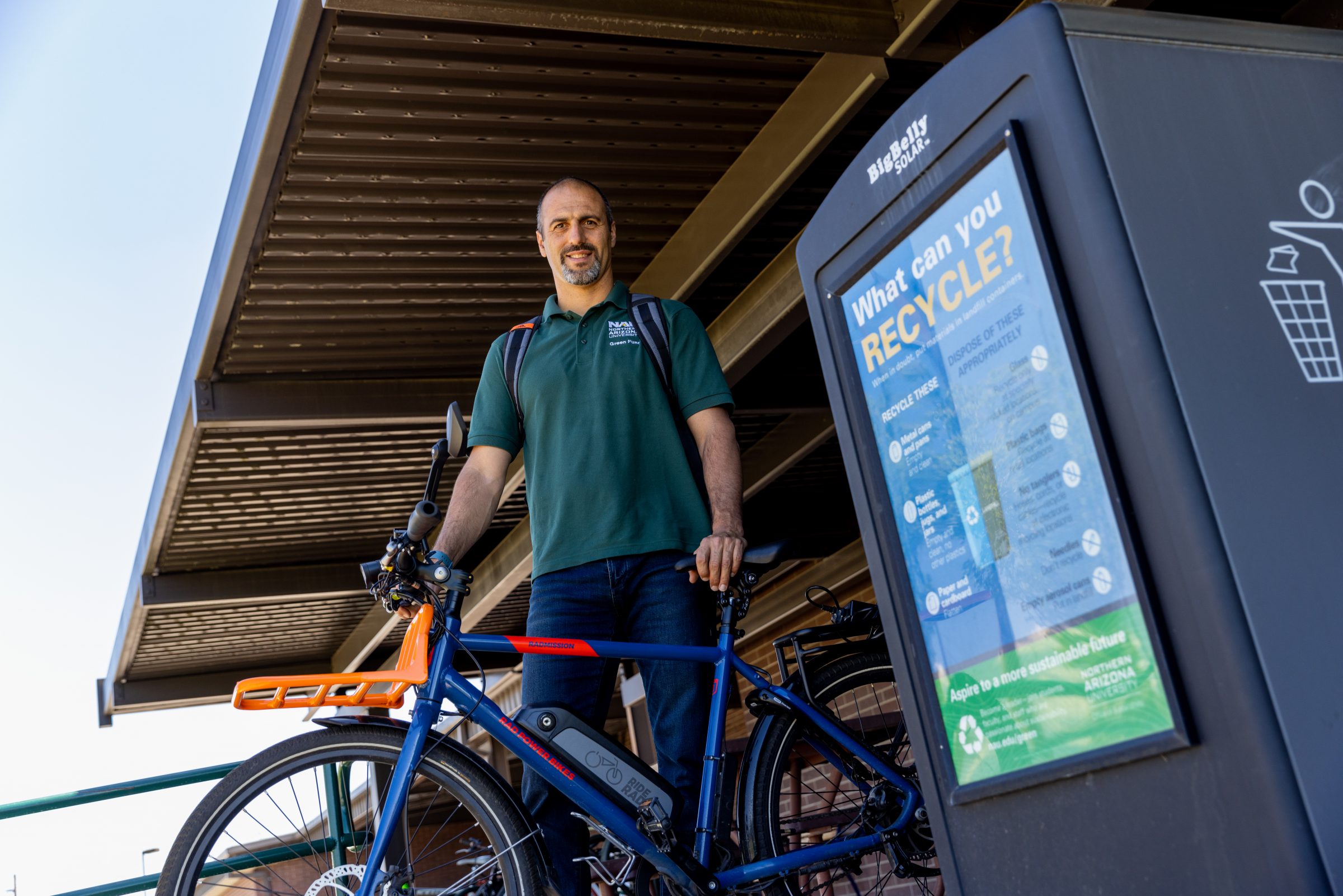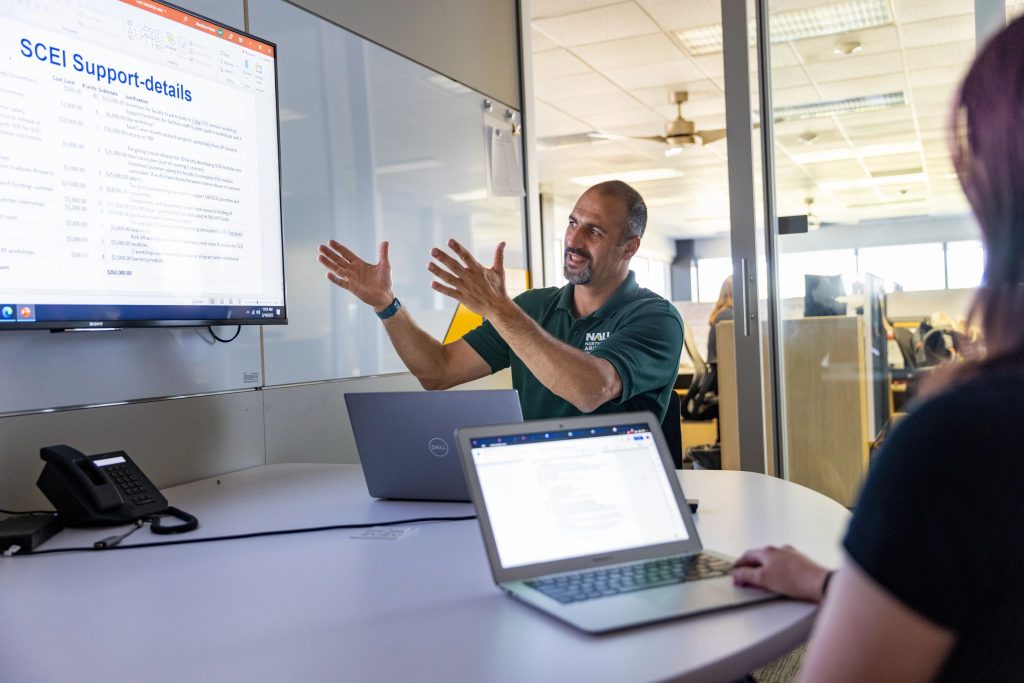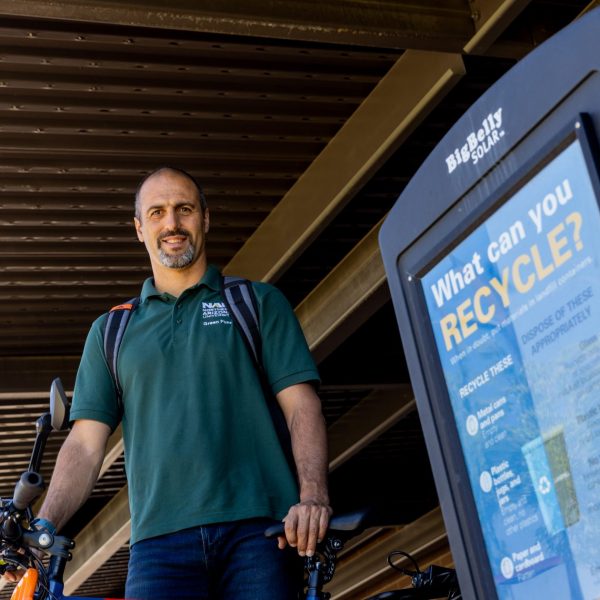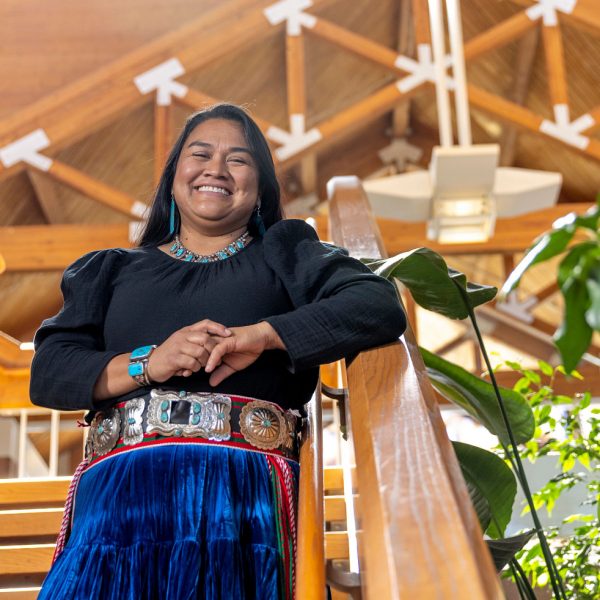
Northern Arizona University’s commitment to sustainability largely manifests itself in the work and dedication of its environmental student groups and sustainability staff. Their efforts have lately culminated in the proposed Climate Action Plan, facilitated by Abraham (Avi) Henn, NAU’s Manager of Sustainability.
Avi Henn is committed to the future.
“My identity on a personal level has always been tied to work around environmental protection—it’s something that runs really deep. In childhood, I was raised in a place that saw pollution and environmental devastation occur very quickly, which was what initially sparked my interest in clean environments, quality of life, affinity to nature, and the desire to protect landscapes. From that point, I’ve had a desire to feel like I’m doing my part, and that I want to devote my professional career to ensuring a better place for us to live as a species,” says Henn.
Henn (MS Climate Sciences and Solutions, ’12; MS Environmental Sciences and Policy, ’10) views sustainability as a way to maintain a healthier environment and ensure a thriving human population. “I believe that we’re shifting to a global civilization and that sustainability will play a huge role, because otherwise, we can’t stay on this rock,” says Henn.
Motivated by his personal and professional experiences across the globe and in both private and public environmental industries, Henn expresses his interests at NAU through his promotion of sustainability on campus, work with student and staff environmental groups, and the writing, planning, and execution of the Climate Action Plan (CAP), which was proposed to President Cruz Rivera earlier this year.

The CAP provides a guidebook for the NAU Flagstaff campus to reach carbon neutrality by 2030, “meaning that NAU will no longer be a net source of greenhouse gas emissions,” says Henn. The date was chosen by the Climate Action Steering Committee as being the most realistic for goal achievement and based on global climate science recommendations. The steering committee, composed of senior-level or environmentally-minded faculty, staff, and graduate students, meets regularly to discuss project updates and changes.
Henn’s main role on the project? “To make sure it all happens!” he laughs. “My role is to manage, coordinate, support, and provide consultation,” he continues. To complete the project, Henn liaises with regional and local partners (including the city and county), consultants, NAU faculty and staff, and higher education sustainability-focused associations that provide accreditation (such as Second Nature).
A community effort
The CAP also offers unique opportunities for the NAU student body. “Another major goal of the plan is to not waste this awesome chance to educate our students and do some interesting academic work. Decarbonization is a global challenge, and we all have to learn from each other on how that is done. The concept of having NAU work function as a living laboratory, where you try things, where you use your own intellectual and academic resources to get some important work done, is an incredible opportunity,” says Henn.
CAP-driven research is part of the Sustainable Campus Ecosystem Initiative (SCEI). “SCEI connects sustainability needs and the operations in decarbonization on the Flagstaff and statewide campuses with our academics,” says Henn. The CAP functions as a cornerstone of SCEI, whose goal is to enable student learning opportunities in organization-wide carbon reduction strategies through data sharing and a connection to campus operations.
Additionally, the plan aligns with the carbon neutrality goals and deadlines set by the City of Flagstaff, making the CAP part of a truly unified, community-wide effort. “In addition to reduction or elimination of emissions, working with our regional partners and increasing our regional resilience is another major goal of the plan—creating the ability to adapt to a world where the climate is not as predictable,” says Henn. The Flagstaff Carbon Neutrality Plan strives for carbon neutrality by 2030, and is focused on making the city more resilient to climate change impacts. It also addresses the disproportionate effects of climate change upon vulnerable communities and has made equity in its decision-making processes a critical aspect of its plan.
While the CAP holds personal importance for Henn, he views the plan as a labor of a community that cares. “Our student body, our faculty and staff, local Flagstaffians—a lot of people here care about climate change,” Henn says.
What’s in NAU’s Climate Action Plan?
The proposed plan directs the university to its overarching goal of carbon neutrality by addressing its emissions sources—including NAU’s transportation fleet, the natural gas consumption of campus facilities, energy inefficiency in its campus buildings, and others—and either reducing or eliminating them. The sources of emissions are broken down in the plan by scope. The CAP proposes that scopes one and two should be addressed by 2030, while scope three will be quantified and addressed in a subsequent emissions reduction plan by no later than 2025.
-
Scope one is primarily focused on reducing natural gas usage on campus, which comprises 40 percent of NAU’s current greenhouse gas emissions and includes its fleet of vehicles and buses.
-
Scope two addresses electricity consumption, which makes up a further 56 percent of campus emissions.
-
Scope three tackles emissions from employee commuting, on-campus waste generation, and food production, among others.
Increased energy efficiency in campus buildings will be actioned in stages across all phases of the plan via building retrofits, which can achieve a 10–30 percent reduction in overall energy usage.







